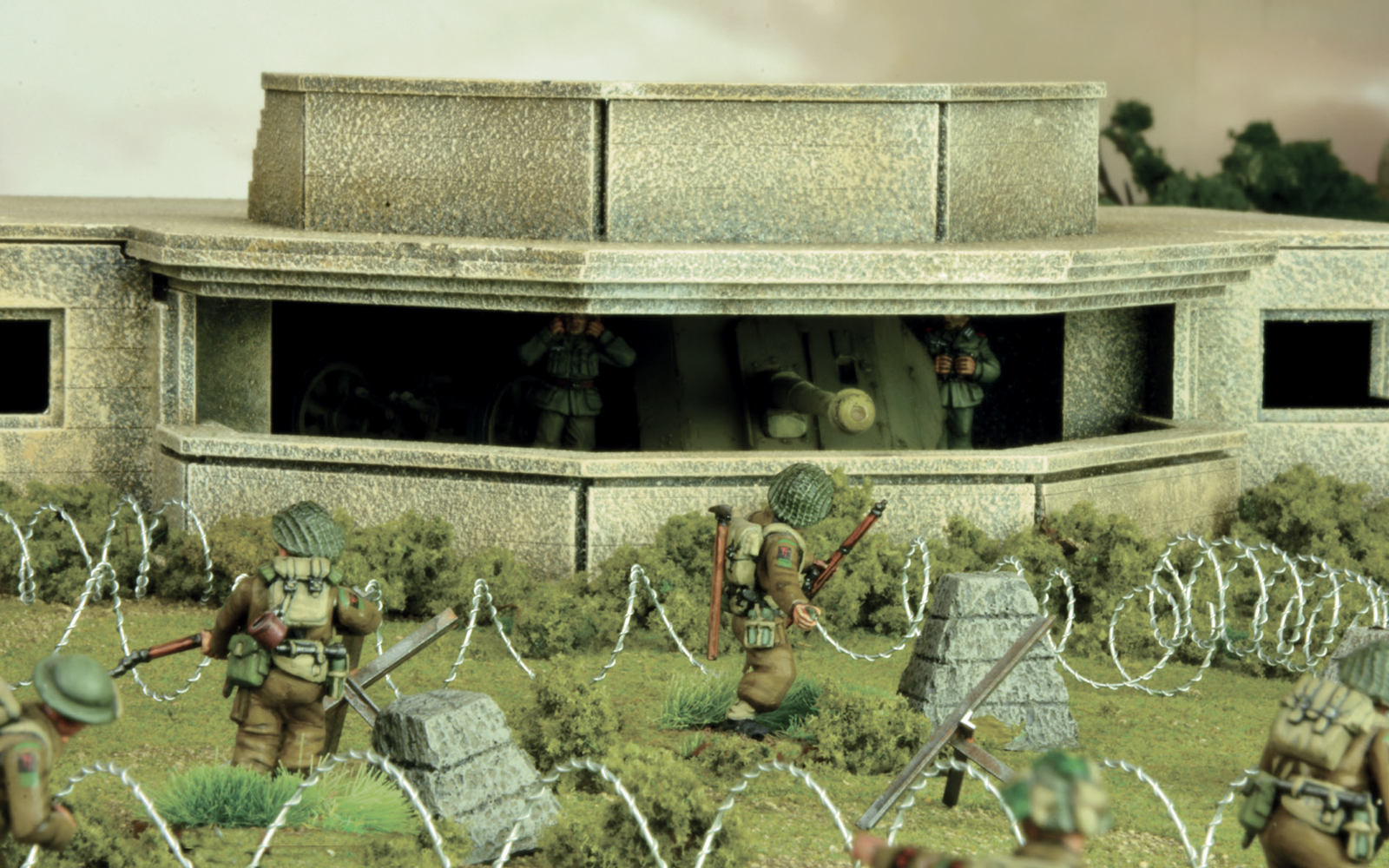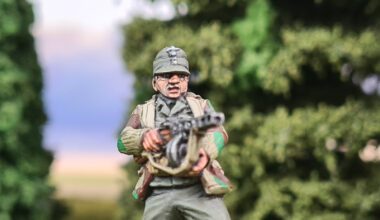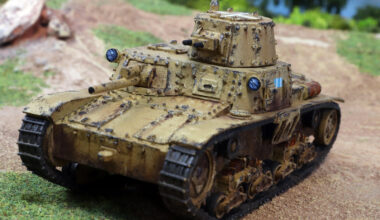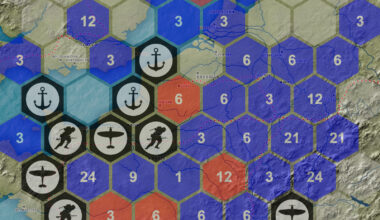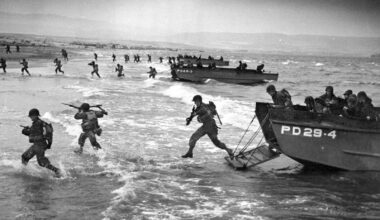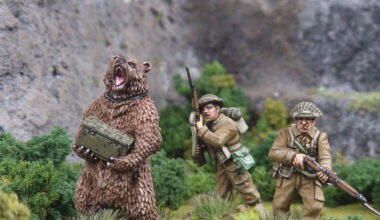This scenario represents a frontal assault against a section of an enemy fortified line. We’re using this to represent troops storming the Atlantik Wall on D-Day; but it is equally useful to portray a number of alternative historical or ‘what if?’ scenarios. For example, the German Panzer Grenadiers attacking the dug-in defenders in the initial phases of the battle of Kursk, the western allies’ assault against the Westwall/Siegfried Line, the Soviets overwhelming the Seelow Heights defences… or the ‘what if’ assaults against the Maginot line!
Bunker Assault
Your forces must smash through the enemy defence lines and capture all three enemy strongpoints.
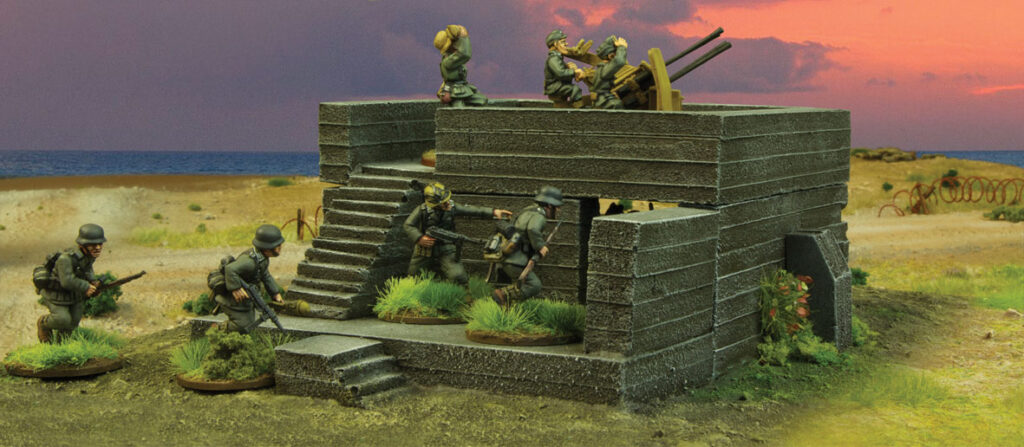
Forces
This scenario pitches a superior attacking force against a defender that, though outnumbered, is dug in into a well-prepared defence line consisting of pillboxes/bunkers and other obstacles and fortifications. First, agree with your opponent who is going to be the attacker and the defender. The attacker picks a force to an agreed points total (e.g. 1,200pts) and the defender picks a force that is half that total (e.g. 600pts).
In addition to his force, however, the defender receives three bunkers and nine ‘hard cover’ linear obstacles.
Each linear obstacle must be up to 6″ long and 1″ tall, and should provide hard cover (so use low walls, earth embankments, sandbags and the like). You can replace any number of ‘hard cover’ linear obstacles with ‘soft cover’ ones (barbed wire, hedges, picket fences, etc.) and if you do so, you get two ‘soft cover’ obstacles for each ‘hard cover’ one you surrender. However, if you replace too many obstacles in this way, you can alter the game balance pretty badly, so try to stick to nine pieces of hard cover as much as you can.
Bunkers should be large enough to accommodate a single unit of infantry or artillery. The rules for bunkers are on page 104 of the Bolt Action rulebook.
Set-up
The game is played along the length of the table.
Terrain: The defender sets up one of their bunkers and three linear obstacles in each of the areas highlighted in grey on the map – the first, second and third defence lines. The rest of the table should have very little terrain, maybe only the occasional tree or area of scrub, but as it represents a prepared defence – anything likely to provide cover to an attacker would have been removed to leave a good field of fire to the troops in the bunkers and behind the fortifications. The last strip of the table between the third defence line and the Defender’s edge of the table can include more terrain, like a small wood, or even some buildings, but once again, do not overdo it.

It is important that the defender sets up the terrain cleverly, making sure that the bunkers’ line of fire is as clear as possible and that the fortifications make life as difficult as possible for the advancing enemies. Keep in mind that the enemy is likely to take cover behind your defences as they capture them, and that firing over obstacles, unless your troops are leaning against them, will offer cover to the enemy infantry as well… so place your defences cunningly.
Deployment: The defender then divides the number of units in his army by 3. The result is the number of units he must deploy within each defence line. Of course, unless the total number of units in your army is a multiple of three, you’ll end up with one or two spare units – these can be placed in any defence line or left in reserve. For example, if you have seven units, you must place two in each defence line and you end up with a spare one, which you can add to any defence line or leave in reserve.
Defending units can (and should!) use the hidden set-up rules (see Hidden Set-up on page 117 of the Bolt Action rulebook).
The attacker’s units are not set-up on the table at the start of the game. The attacker must nominate half of his force (rounding up) to form his first wave. Any units not included in the first wave are left in reserve. Units in reserve cannot outflank in this scenario, and similarly, units with special deployment rules, like snipers, observers and spotters, cannot use their special rules.
Objective
The attacker must try to capture the three bunkers – the defender must try to stop them. To capture a bunker, the attacker needs to clear it of all enemies and enter it at some point during the game with one of their infantry units. If the defender moves an infantry unit back in, then the attacker must capture it again.
Preparatory Bombardment
The attacker rolls a die: on a 2+, a preparatory bombardment strikes the enemy positions (see Preparatory Bombardment page 118). On a result of 1, the barrage fails to appear, but you have your orders and the attack must go ahead as planned.
First Turn
The battle begins. During turn 1, the attacker must move their first wave onto the table. These units can enter the table from any point on the attacker’s table edge and must be given either a run or advance order. Note that no order test is required to move units onto the table as part of the first wave, and remember that they cannot assault on the turn they enter the table.
Game Duration
Keep a count of how many turns have elapsed as the game is played. At the end of turn 10, roll a die. On a result of 1, 2 or 3 the game ends, on a roll of 4, 5 or 6 play one further turn.

Victory!
At the end of the game, if the attacker has captured all three bunkers, he wins. If the attacker has captured two bunkers the game is a draw. If the attacker has captured one bunker (or none!) then the defender wins.
All bunkers are held by the defender at the start of the game regardless of where his troops are positioned. If a bunker changes hands during the game then it remains under the control of that side until it is taken back.
To capture a bunker there must be no enemy in it and you must move one of your infantry units into it.
Larger or Smaller Games
You might, of course, want to play this type of game on smaller or larger tables, in which case you should reduce/increase the number of terrain pieces in proportion with the size of the table. On much larger tables, you may even want to increase the number of bunkers and/or defence lines, but remember to adjust the number of turns played as well, otherwise you risk running out of time before you can even reach your objectives!
